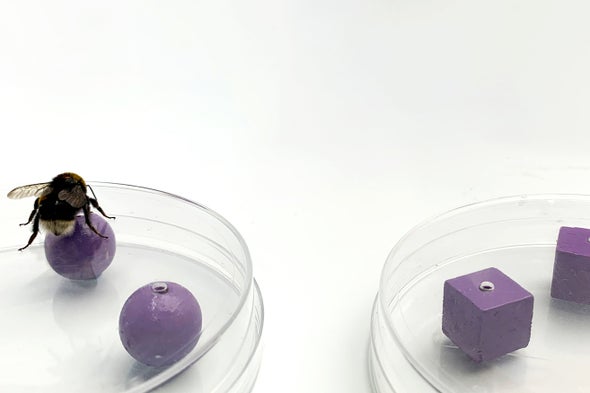In 1688 Irish philosopher William Molyneux wrote to his colleague John Locke with a puzzle that continues to draw the interest of philosophers and scientists to this day. The idea was simple: Would a person born blind, who has learned to distinguish objects by touch, be able to recognize them purely by sight if he or she regained the ability to see?
The question, known as Molyneux’s problem, probes whether the human mind has a built-in concept of shapes that is so innate that such a blind person could immediately recognize an object with restored vision. The alternative is that the concepts of shapes are not innate but have to be learned by exploring an object through sight, touch and other senses, a process that could take a long time when starting from scratch.
An attempt was made to resolve this puzzle a few years ago by testing Molyneux's problem in children who were congenitally blind but then regained their sight, thanks to cataract surgery. Although the children were not immediately able to recognize objects, they quickly learned to do so. The results were equivocal. Some learning was needed to identify an object, but it appeared that the study participants were not starting completely from scratch.
Lars Chittka of Queen Mary University of London and his colleagues have taken another stab at finding an answer, this time using another species. To test whether bumblebees can form an internal representation of objects, Chittka and his team first trained the insects to discriminate spheres and cubes using a sugar reward. The bees were trained in the light, where they could see but not touch the objects that were isolated inside a closed petri dish. Then they were tested in the dark, where they could touch but not see the spheres or cubes. The researchers found that the invertebrates spent more time in contact with the shape they had been trained to associate with the sugar reward, even though they had to rely on touch rather than sight to discriminate the objects.
The researchers also did the reverse test with untrained bumblebees, first teaching them with rewards in the dark (where they could touch but not see the spheres or cubes) and then testing them in the light (where they could see but not touch the objects). Again, the bees were able to recognize the shape associated with the sugar reward, despite the fact that they had to rely on sight rather than touch in the test. In short, “bees have solved Molyneux's problem,” Chittka says.
A substantial body of work has documented the visual pattern recognition abilities of bees. Researchers previously knew that the insects could recognize complicated color patterns in flowers and even human faces. But most of these pattern-recognition tasks can be done with very simple feature detectors—for instance, neurons’ orientation of edges, the field of brightness, and so on. “You could do a whole lot of seemingly advanced pattern recognition without actually having a virtual image floating around in your head, a kind of representation of the object,” Chittka says. “So that was always the big question: Is there, in the same way that our perception works, a kind of object representation inside the bees' head rather than simple elements of the image that are, in some way, linked to rewards?”
The fact that the insects were able to discriminate shapes by transferring information across sensory modalities suggests that they represent object features and can access them through sight or touch. “That's why we're excited about this,” says Chittka, a bee sensory physiologist and behavioral ecologist.
Experts who were not involved with the study are also intrigued but express some caveats. The experiment shows that bees can transfer a feature that they have identified from one sensory modality to another, says Ludwig Huber, a zoologist at the University of Veterinary Medicine, Vienna, who has studied cross-modal sensory integration in mammals and birds. “But the big question is ‘What is this feature, and how abstract is it?’” The bees may be able to discriminate between rounded surfaces and sharp edges by transferring sensory information from one mode to another without recognizing the objects or having an internal representation of them, he argues.
Huber also wonders about the real-world validity of the experiment. In the wild, bumblebees are likely to rely on sight and olfactory cues to recognize flowers, for example. He would like to see a test that is more similar to the kinds of objects and sensory cues that bees are likely to encounter in nature.
Jonathan Birch, a philosopher of science studying animal sentience at the London School of Economics and Political Science, cautions that the bees may have had prior experience associating visual and tactile information about straight edges and curved surfaces in the context of their nests, so it is not possible to eliminate the possibility that some of the cross-sensory integration is learned rather than innate.
For Chittka, the ultimate goal is to find out whether bees have consciousness, which neuroscience and cognitive science often study by focusing on the integration of information from different senses. His earlier work with bumblebees shows that they have sophisticated abilities for learning and memory. “None of these tasks—and the performance of the bees—is a formal indicator of consciousness. In fact, nothing is,” Chittka said at his presentation at the recent annual meeting of the Society for Integrative and Comparative Biology in Austin, Tex. “But all of these taken together, I think, nudge the probabilities in the right direction.”


